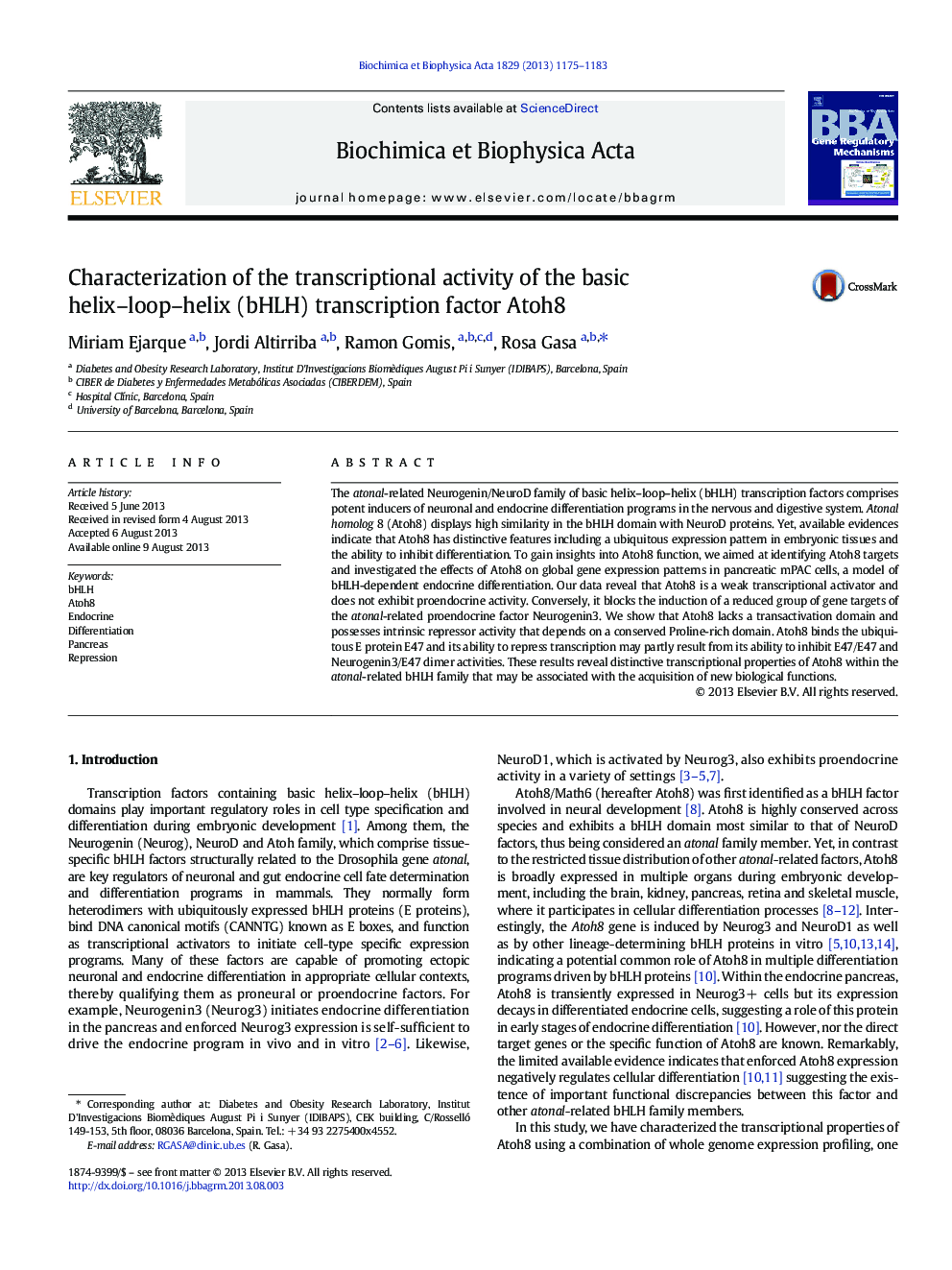| Article ID | Journal | Published Year | Pages | File Type |
|---|---|---|---|---|
| 1946478 | Biochimica et Biophysica Acta (BBA) - Gene Regulatory Mechanisms | 2013 | 9 Pages |
•Atoh8 does not function as a proendocrine gene in vitro.•Atoh8/E47 heterodimers are weak transcriptional activators.•Atoh8 has intrinsic repressor activity that depends on its Pro-rich domain.•Atoh8 differs functionally from the Neurog/NeuroD atonal-related family.
The atonal-related Neurogenin/NeuroD family of basic helix–loop–helix (bHLH) transcription factors comprises potent inducers of neuronal and endocrine differentiation programs in the nervous and digestive system. Atonal homolog 8 (Atoh8) displays high similarity in the bHLH domain with NeuroD proteins. Yet, available evidences indicate that Atoh8 has distinctive features including a ubiquitous expression pattern in embryonic tissues and the ability to inhibit differentiation. To gain insights into Atoh8 function, we aimed at identifying Atoh8 targets and investigated the effects of Atoh8 on global gene expression patterns in pancreatic mPAC cells, a model of bHLH-dependent endocrine differentiation. Our data reveal that Atoh8 is a weak transcriptional activator and does not exhibit proendocrine activity. Conversely, it blocks the induction of a reduced group of gene targets of the atonal-related proendocrine factor Neurogenin3. We show that Atoh8 lacks a transactivation domain and possesses intrinsic repressor activity that depends on a conserved Proline-rich domain. Atoh8 binds the ubiquitous E protein E47 and its ability to repress transcription may partly result from its ability to inhibit E47/E47 and Neurogenin3/E47 dimer activities. These results reveal distinctive transcriptional properties of Atoh8 within the atonal-related bHLH family that may be associated with the acquisition of new biological functions.
